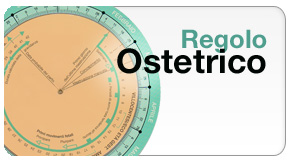
Sindrome di Usher OMIM 276900
Sindrome di Usher OMIM 276900
Redatto da: P.Parisella
La Sindrome di Usher fa parte del gruppo delle ciliopatie ed è la più comune causa di sordità associata a cecità, ad esordio nell'infanzia.
Essa è caratterizzata da ipoacusia congenita associata a retinite pigmentosa che inizialmente comporta deficit visivo e poi progredisce verso la cecità nell'arco di qualche decennio.
In base alla sordità, ai problemi di equilibrio ed all'età di insorgenza della retinite pigmentosa si distinguono tre forme di S. di Usher:
- Tipo I: le persone con Sindrome di Usher Tipo I nascono con una sordità profonda e presentano problemi di equilibrio in quanto non ricevono segnali dall'orecchio interno; dopo la prima decade di età manifestano i primi sintomi della retinite pigmentosa, fotosensibilità e difficoltà a vedere con poca luce.
- Tipo II: le persone con Sindrome di Usher Tipo 2 nascono con una perdita uditiva bilaterale da moderata a grave ma molto raramente perdono completamente la capacità uditiva. Il progredire della degenerazione retinica inizia dopo l'adolescenza.
- Tipo III: è il tipo più raro, maggiormente presente nei paesi scandinavi; le persone affette nascono senza manifestare un deficit udivo; lipoacusia inizia nei primi anni di vita, è progressiva e intorno ai 30-50 anni può diventare profonda. La degenerazione della retina inizia a manifestarsi dopo l'adolescenza; in alcuni casi sono presenti anche i problemi di equilibrio.
La patologia è trasmessa con carattere autosomico recessivo ed è legata a mutazioni di 10 geni diversi a seconda del tipo di forma sindromica: tipo I (MYO7A, USH1C, CDH23, PCDH15, SANS); tipo II (USH2A, GPR98, VLGR1); tipo III (CLRN1).
La diagnosi si basa sui due sintomi caratteristici: sordità neurosensoriale bilaterale e retinite pigmentosa.
La diagnosi differenziale si pone con: Sindrome di Kearns-Sayre, malattia di Refsum, Sindrome di Alstrom.
La diagnosi prenatale è possibile nelle famiglie a rischio nelle quali è stata identificata la mutazione genetica.
Bibliografia
Davenport S, Omenn G, The Heterogeneity of Usher Syndrome,
volume 426, Amsterdam, Excerpta Medica Foundation, 1977.
Fishman GA, Kumar A, Joseph ME, Torok N, and Andersonj RJ,
Usher's syndrome in Archives of Ophthalmology, vol. 101, nº 9, 1983, pp.
13671374,
Gerber S, D Bonneau, B Gilbert, A Munnich, JL Dufier, JM
Rozet e J Kaplan, USH1A: chronicle of a slow death in American Journal of Human
Genetics, vol. 78, nº 2, 2006, pp. 3579,
Gorlin R, Tilsner T, Feinstein S, Duvall AJ, Usher syndrome
type III in Arch. Otolaryngol., vol. 105, nº 6, 1979, pp. 353354,
Grøndahl J, Estimation of prognosis and prevalence of
retinitis pigmentosa and Usher syndrome in Norway in Clin. Genet., vol. 31, nº
4, 1987, pp. 255264,
Hashimoto T, Gibbs D, Lillo C, Azarian SM, Legacki E, Zhang
XM, Yang XJ, Williams DS, Lentiviral gene replacement therapy of retinas in a
mouse model for Usher syndrome type 1B in Gene Therapy, vol. 14, nº 7, 2007,
pp. 584594,
Hope CI, Bundey S, Proops D, Fielder AR, Usher syndrome in
the city of Birmingham prevalence and clinical classification in British
Journal of Ophthalmology, vol. 81, nº 1, 1997, pp. 4653,
Mets MB, Young NM, Pass A, Lasky JB, Early diagnosis of
Usher syndrome in children in Transactions of the American Ophthalmological
Society, vol. 98, 2000, pp. 23745
Otterstedde CR, Spandau U, Blankenagel A, Kimberling WJ,
Reisser C, A new clinical classication for Usher's syndrome based on a new
subtype of Usher's syndrome type I in Laryngoscope, vol. 111, nº 1, 2001, pp.
8486,
Ouyang XM, Yan D, Du LL, Hejtmancik JF, Jacobson SG, Nance
WE, Li AR, Angeli S, Kaiser M, Newton V, Brown SD, Balkany T, Liu XZ,
Characterization of Usher syndrome type I gene mutations in an Usher syndrome
patient population in Hum Genet, vol. 116, nº 4, 2005, pp. 292299,
Pakarinen L, Tuppurainen K, Laipapala P, Mäntyjärvi M,
Puhakka H, The ophthalmological course of Usher syndrome type III in
International Ophthalmology, vol. 19, nº 5, 1996, pp. 307311,
Petit C, Usher syndrome: from genetics to pathogenesis in
Annual review of genomics and human genetics, vol. 2, 2001, pp. 27197,
Reiners J, K Nagel-Wolfrum, K Jürgens, T Märker e U Wolfrum,
Molecular basis of human Usher syndrome: deciphering the meshes of the Usher
protein network provides insights into the pathomechanisms of the Usher disease
in Experimental eye research, vol. 83, nº 1, 2006, pp. 97119,
Sankila EM, Pakarinen H, Kääriäinen H, Aittomäki K,
Karjalainen S, Sistonen P, de la Chapelle A, Assignment of Usher syndrome type
III (USH3) gene to chromosome 3q in Hum. Mol. Genetics, vol. 4, nº 1, 1995, pp.
9398,
Usher C, On the inheritance of Retinitis pigmentosa with
notes of cases in Roy. Lond. Ophthalmol. Hosp. Rep., vol. 19, 1914, pp.
130236.
Smith RJ, Berlin CI, Hejtmancik JF, et al: Clinical diagnosis of the Usher syndromes. Usher Syndrome Consortium. Am J Med Genet 50: 32-8, 1994
Aggiornamenti
- Patologie Genetiche dello Scheletro
Sono elencate tutte le 436 Displasie Scheletriche con la... - Consigli per l'utilizzo del software diagnosi in Diagnosi...
Consigli per l'utilizzo del software diagnosi in Diagnosi... - TERMINI DI USO DEL PORTALE WEB med2000eco e Software...
TERMINI DI USO DEL PORTALE WEB med2000eco e Software...
